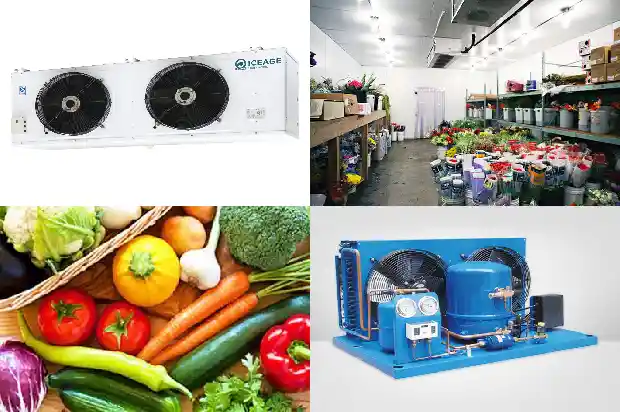Four Key Steps in the Refrigeration Unit Maintenance Manual!
2025-03-16
The so - called four steps refer to: Inspection, which means observing the complexion; Auscultation and Olfaction, where auscultation means listening to sounds and olfaction means smelling odors; Inquiry, which means asking about symptoms; and Pulse - taking, which means feeling the pulse. Collectively, they are called the four diagnostic methods.
In the context of refrigeration equipment repair:
- Inspection in refrigeration equipment repair means observing the operation of the refrigeration system.
Auscultation and Olfaction mean listening to the operation of the refrigeration equipment and detecting any strange odors. Inquiry means asking the customer about the problems of the refrigeration system. Pulse - taking means specifically observing the problem area or inspecting the refrigeration system.
By borrowing the diagnostic techniques in traditional Chinese medicine, we can enhance the repair capabilities for refrigeration machines. We can target the problems in the refrigeration system, prescribe the right remedies, quickly solve the problems in the refrigeration system, and improve the repair efficiency.
Inspection in Refrigeration Equipment Repair
Inspection in refrigeration equipment repair involves purposefully observing the compressor, condenser, evaporator, pipelines, etc. of the refrigeration equipment to assess the operation of the system. For example, if the outside of the condenser is covered with dirt, there are collision marks on the evaporator, or the compressor is not running, we can judge the problems in the operation of the refrigeration system.
Inspection in refrigeration equipment repair involves purposefully observing the compressor, condenser, evaporator, pipelines, etc. of the refrigeration equipment to assess the operation of the system. For example, if the outside of the condenser is covered with dirt, there are collision marks on the evaporator, or the compressor is not running, we can judge the problems in the operation of the refrigeration system.

- Inspecting the Thermostat: Check if the thermostat alarms or what the alarm warning is.
- Inspecting the Condenser: Observe the operation of the condenser. For instance, check if the condenser is dirty or if its exterior is corroded. If the problem is not very serious, it can be cleaned by oneself to prevent an impact on the system. If the problem is relatively serious, a systematic inspection and timely treatment are required. If the problem is severe, a systematic cleaning of the system or replacement of individual components is necessary.
- Inspecting the Evaporator: Check if the evaporator has been hit by goods. When adjusting the temperature, check if there is frost or semi - frost at the air outlet. If the collision is minor, it may not be a big issue. But if it is severe, such as causing a copper pipe leak, it needs to be repaired in a timely manner.
- Inspecting the Compressor: Check if the compressor is running and whether the operating parameters such as pressure and temperature are normal.
- Inspecting the Pipelines: Check if there is any damage to the pipelines. (If the pipeline is damaged, impurities will enter the refrigeration system and damage it.)
Auscultation and Olfaction in Refrigeration Equipment
Through hearing and smelling, we can judge the operation of the refrigeration equipment. Generally, listening involves hearing the rotation of the compressor and the flow of refrigerant in the pipelines. Smelling is used to detect if there is any short - circuit in the circuit (a burnt smell will occur when the circuit burns out).
Through hearing and smelling, we can judge the operation of the refrigeration equipment. Generally, listening involves hearing the rotation of the compressor and the flow of refrigerant in the pipelines. Smelling is used to detect if there is any short - circuit in the circuit (a burnt smell will occur when the circuit burns out).
Inquiry in Refrigeration Equipment
Ask the customer about the problems of the refrigeration equipment. By asking, we can understand the situation of the refrigeration equipment and its operation before the problem occurred. Combining with inspection, auscultation and olfaction, we can analyze and make a judgment.
Inquiry is to understand the problems by asking the customer or the user of the equipment. Information about the time, cause, process of the problem with the refrigeration equipment, as well as usage habits and regular maintenance, can only be obtained through inquiry. Therefore, inquiry is one of the important methods to understand the problems of the refrigeration equipment.
Ask the customer about the problems of the refrigeration equipment. By asking, we can understand the situation of the refrigeration equipment and its operation before the problem occurred. Combining with inspection, auscultation and olfaction, we can analyze and make a judgment.
Inquiry is to understand the problems by asking the customer or the user of the equipment. Information about the time, cause, process of the problem with the refrigeration equipment, as well as usage habits and regular maintenance, can only be obtained through inquiry. Therefore, inquiry is one of the important methods to understand the problems of the refrigeration equipment.
- Ask the customer to compare the situation before and after the problem occurred.
- Ask the customer about the time when the problem occurred and the usage time of the refrigeration equipment.
- Ask the customer about their usage habits of the refrigeration equipment.
- Ask the customer if they pay attention to maintenance.
Pulse - taking in Refrigeration Equipment Repair
Pulse - taking in refrigeration equipment repair means using "hands" to check the refrigeration equipment. Some parts of the refrigeration equipment need to be disassembled to understand the specific cause of the failure.
Pulse - taking in refrigeration equipment repair means using "hands" to check the refrigeration equipment. Some parts of the refrigeration equipment need to be disassembled to understand the specific cause of the failure.
- Check: Check the parts of the refrigeration equipment that are likely to have problems.
- Judge: Judge the possible problems of the refrigeration equipment through inspection and deal with them in a timely manner.
Related Articles
- Master the Compressor Replacement of the Multi-connected Unit System in Ten Steps
- Remember! 3 Steps to Calculate Central Air - conditioner Cooling Capacity
- Operating Principle and Standard Installation Steps of Multi - split Systems in Refrigerant Air - conditioning Systems
- What Key Steps Should Not Be Ignored in Installing an Air - source Heat Pump Heating System?
- Steps for Building Logistics Cold Storages
- System Airtightness Experiment Requirements and Steps
- Analysis of Classification, Differences, Advantages and Disadvantages of Cold Storage Refrigeration Compressors
- Relationship and Adjustment between the Four Main Components of a Refrigeration System and Refrigeration Capacity
- Liquid Supply Methods for Cold Storage Refrigeration Systems
- The "Horsepower" Rating, Power and Refrigeration Capacity of Air Conditioners
- Reasons and Hazards of Liquid Hammer in Refrigeration Compressors
- What are the Reasons and Hazards of Uneven Liquid Distribution in the Refrigeration System?
- Abnormal Phenomena and Causes during the Operation of Reciprocating Refrigeration Compressors
- Several Common Problems in the Operation of the Refrigeration System
- Analysis of the Causes of Frost Formation at the Suction Port of the Refrigeration Compressor
- Reasons for the Poor Refrigeration Effect of the Cold Storage
- How Do Pressure and Temperature Affect the Refrigeration System?
- Understand These Refrigeration Knowledge to Boost Your Style!
